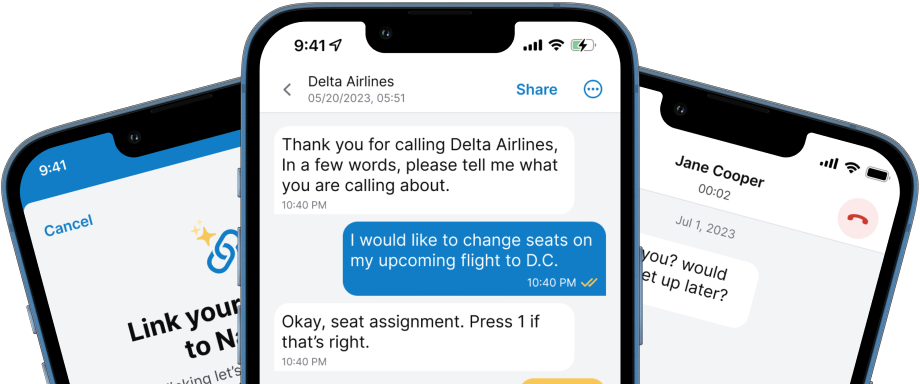Technology Trends: Latest Innovations for the Deaf
Read about the latest technology trends and innovations for the Deaf, hearing assistive technology, alerting devices and more!

Hearing Assistive Technology
Streaming Options
Hearing aids and implants have evolved to empower the deaf and hard of hearing community with new features. These advancements direct video streaming audio to worn devices, enhancing clarity and communication. Leading brands such as Cochlear Nucleus 8, Nucleus 7, Nucleus Kanso 2, and Baha 6 Max have embraced these capabilities. Additionally, Starkey Bluetooth hearing aids offer the convenience of syncing with Fire TVs, further enriching the entertainment experience.
Bluetooth Connections
Bluetooth technology has revolutionized the way hearing aids connect to the world. For instance, the Nagish app lets you connect your hearing aids seamlessly to receive audio with captioned phone calls. Bluetooth connectivity also allows you to enjoy music and connect to smartphones, watches, and more. While it's true that Bluetooth hearing technology can drain batteries faster, the solution is simple – opt for devices with rechargeable batteries.
Alerting Devices

Alarm clocks
Sonic Alert, a well-known brand in the deaf and hard of hearing community, offers alarm clocks with inclusive features. These range from increased volume and vibration pads to strobe light alerts, ensuring everyone can wake up on time. Many of these inclusive alarm clocks can be found on Amazon, making them easily accessible.
A “Sunrise Clock” may be a good fit if you are light-sensitive. This model mimics natural daylight in your room as your wakeup time approaches. Another option is an alarm clock watch with a vibrate feature. There are many different models of watches on the market, such as on Amazon. A commonly used watch is the Apple Series watch, which can vibrate and synch with many other devices.
Baby Monitors
Baby monitors have undergone significant improvements, making them more user-friendly for the deaf. For instance, VTech DM221 offers a receiver that can be clipped to your belt and vibrates when an alert is received. With a 1,000-foot range and an affordable price tag of under $50, it's a practical choice for many parents.
A more expensive option is the Owlet, which uses a sock to wrap around the baby’s ankle to monitor pulse, oxygen, and sounds. The paired Owlet app sends notifications to your smartphone.
For those with extra Apple phones, the Twinbees app can utilized as baby monitors (Apple Watch Series 6s and up). The app can send notifications to your primary iPhone or Apple watch, even with a vibrate setting. It can also send alerts to either one parent or two.
Smoke Alarms
Many mainstream detectors are now accessible for the deaf and hard of hearing. Look for alarms equipped with a strobe light feature. Your local fire department may be knowledgeable about products suitable for your area or electrical system.
If you’re renting, your property management company is required to provide ADA-compatible alert systems to accommodate your needs. Your state’s disability rights center can provide assistance if necessary.
Doorbells
Wireless doorbells with cameras, such as Ring, Alexa, or Nest, are becoming increasingly common. These are well-suited for the deaf and hard of hearing as they can be synchronized with a smartphone app. Another advantage is receiving notifications such as package deliveries and accessing live video feeds. Numerous options are available on Amazon.
Alternatively, another option is to utilize a wireless doorbell with many receivers that can emit a light-flashing alert. These are typically affordable and straightforward to set up.
Entertainment

SignUp Captions is a browser extension that allows you to see ASL interpretations of movies on your streaming channel in picture-in-picture mode. It supports many streaming services, including Disney+, Netflix, Peacock, YouTube, and more. Best of all, there is no cost for the Deaf and hard of hearing community.
Technological Innovations on the Horizon

Looking ahead, the potential of AI and machine learning in hearing assistive technology is truly exciting. One such innovation in development is an app that converts signed videos into a caption file, streamlining the process of adding captions to videos. This promising development could revolutionize how we create and consume content, offering a more inclusive and accessible future.
Additionally, some companies are creating automated interpretations for videos in ASL and the reverse translation of ASL to voiced English. Although these ideas are still in their early stages of development, they hold the promise of becoming robust solutions in the coming years. Labs such as the Motion Light Lab in Washington, D.C., are spearheading efforts in this direction, particularly for the virtual reality world.
Moreover, businesses are increasingly utilizing Video Remote Interpreting (VRI) for customer service. For instance, I recently came across a story on social media about a library with an iPad on its circulation desk for accessing live ASL interpreters, enhancing accessibility for deaf and hard of hearing patrons.
Financial support for devices

Technology can be expensive for many people. However, there are programs out there to assist the deaf and hard of hearing financially. A good starting point is to search for your state’s Vocational Rehabilitation Center online. These centers often provide assistance for purchasing devices at a low cost or for free, and some even discounted phone plans and internet services.
Many non-profit organizations also offer assistance. For example, the Lions Club refurbishes donated hearing aids to give to low-income deaf and hard of hearing people. It is also worth checking with your primary care provider to see if insurance can cover some of these devices.
Conclusion
In conclusion, hearing assistive technology is constantly evolving, providing innovative solutions to help the deaf and hard of hearing community live more inclusive and fulfilling lives. From advanced hearing aids to alerting devices, the technology available today offers a wide range of options.
Additionally, with the promise of AI and machine learning on the horizon, the future looks bright for even more groundbreaking developments. It's also important to remember that financial assistance is available for those in need, and with some research, anyone can find a solution that works for them.



.webp)

